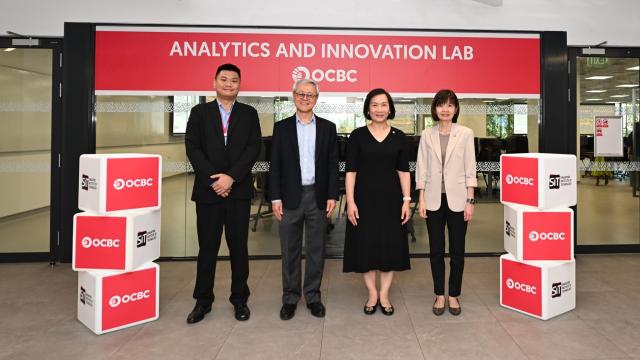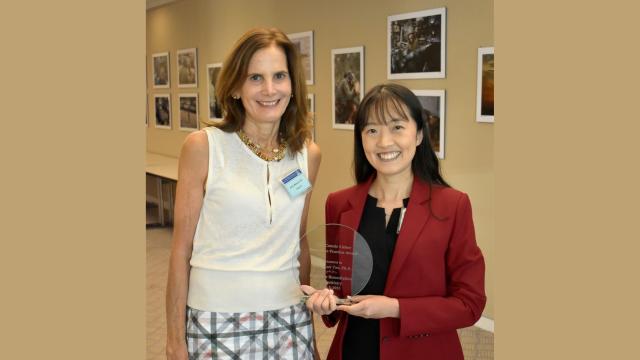 An illustration of SIT's future centralised campus in Punggol.
An illustration of SIT's future centralised campus in Punggol.
“It is worse, much worse, than you think,” begins The Uninhabitable Earth by David Wallace-Wells. The book brings terrifying images of a climate crisis to mind: melting roads, deadly pestilences, and cities submerged underwater. This future, however, is not as distant as we’d like to imagine.
But where can countries begin tackling climate change? Buildings may be a good starting point – they contribute to 20 per cent of emissions in Singapore. The Singapore Institute of Technology is constructing a new campus in Punggol with sustainability as a core tenet, and it is starting with its current campuses.
“SIT is committed to realising the vision of an inspiring and sustainable campus, and we have been encouraging the adoption of sustainability practices amongst our staff and students even now,” says Mr Ronnie Tay, Deputy President (Administration) and Chief Financial Officer of SIT. GovInsider speaks to SIT’s leadership to find out how its upcoming campus will be centred around sustainability, and how its curriculum is already training the next generation of green champions.
Greening the future campus
 While plans for the future campus are well underway, sustainability initiatives have already been implemented on the university’s existing campuses. SIT aims “to inculcate sustainability values amongst staff and students which will contribute to a more liveable and sustainable Singapore,” says Mr Tay. Sustainability efforts include a smart lighting system that uses motion sensors to dim and switch lights off when not needed, to save electricity. Food waste is composted and used as fertiliser for the greenery in one of SIT’s campuses.
While plans for the future campus are well underway, sustainability initiatives have already been implemented on the university’s existing campuses. SIT aims “to inculcate sustainability values amongst staff and students which will contribute to a more liveable and sustainable Singapore,” says Mr Tay. Sustainability efforts include a smart lighting system that uses motion sensors to dim and switch lights off when not needed, to save electricity. Food waste is composted and used as fertiliser for the greenery in one of SIT’s campuses.
But in the future centralised campus in Punggol, the university plans to take sustainability to the next level. “In building the new campus, SIT is intent on doing our part with innovative solutions to address the challenges in energy and climate change the world is facing,” says Mr Chan Wing Leong, Deputy President (Campus Development) & Chief Investment Officer of SIT.
First, it is developing a microgrid in collaboration with Singapore’s utility company, SP Group. The grid will combine gas, electricity and thermal energy into a central network to power up the campus.
The campus will move SIT closer to being self-sustaining when it comes to energy. 10,000 square metres of solar panels will be installed on the university’s rooftops. This could also eliminate carbon emissions at a scale equivalent to removing 2000 vehicles from the road.
Eventually, the microgrid will be used to support the research, development and test-bedding of distributed energy systems and cybersecurity solutions, the university says.
Next, an AI network will monitor and cut energy use. Over 10,000 sensors will collect data on temperature, ambient light and human presence from across the campus to feed into an integrated building system. The system then optimises various utilities such as lights, lifts, air conditioning and security to lower energy consumption.
And a district cooling system will deliver chilled water to supply air conditioning systems in classrooms, laboratories, and other facilities. This mode of cooling uses less energy and thus reduces the carbon footprint of the campus.
Sustainability-focused curriculum
 Apart from greening its campus, SIT is also big on incorporating sustainability into its curriculum.
Apart from greening its campus, SIT is also big on incorporating sustainability into its curriculum.
The university takes an applied learning approach to teaching students about sustainability. For example, SIT is working with the Energy Market Authority on a microgrid testbed housed in Pulau Ubin. Students can monitor the energy output from a laboratory at the SIT@NYP Building campus. From there, they can also learn and apply knowledge on microgrid design, and energy optimisation and management.
There are several undergraduate programmes in the university with a focus on sustainability as well. Students in the Sustainable Infrastructure Engineering (Building Services) programme, for example, are trained to put theory into practice by proposing sustainable and cost-effective solutions for green buildings. Students can also take part in The Mapletree Challenge, where they are tasked to come up with sustainability innovations in their area of study.
The Uninhabitable Earth may be fictional, but it bluntly awakens us to the cost of indifference to climate change. Building a sustainable campus and curriculum, SIT believes, will help the university take a step forward in the fight against climate change.
This article was first published in GovInsider.
![[FA] SIT One SITizen Alumni Initiative_Web banner_1244px x 688px.jpg](/sites/default/files/2024-12/%5BFA%5D%20%20SIT%20One%20SITizen%20Alumni%20Initiative_Web%20banner_1244px%20x%20688px.jpg)


